The Story – part 1 (The Journey and the Bajau village)
Lying in a huge hammock made of white ropes spread between two palm trees standing just at the line where the turquoise sea turns to a beach and reading a good book. Seems like a too-often repeated travel blogging cliché. And I did experience it many times over the last 5 months, since the start of my great Indonesian adventure. Every time I visited a perfect beach in the perfect setting and I reveled in the newly discovered beauty spot of this planet, I had a ‘this is it’ feeling.
‘This is THE beach. How can anything be more even beautiful than this sport right here? What I`m going to explore now when I already found the place? Nothing is going to take my breath away anymore after this.’
However, this country persuaded me every time that I was mistaken. After Teluk Hijau (Green Bay) in Java came the famous Kelinking beach of Nusa Penida. Then, the white, red and chocolate beaches on the island of Adonara, the incredible Banda islands and then Raja Ampat. Surely, nothing was going to beat the Papuan paradise of Raja Ampat. Until I came to the island of Selayar and got hit right in the head by the blinding perfection of Pinang beach.
Don`t get me wrong. It is quite impossible to say which of this beaches and islands ‘beats’ which one. Still, seeing breathtaking places day after day and week after week, you start to have some kind of a standard. After a while, unfortunately, even if a place is beautiful and you enjoy it immensely, not everything stuns you so much you almost hit the ground.
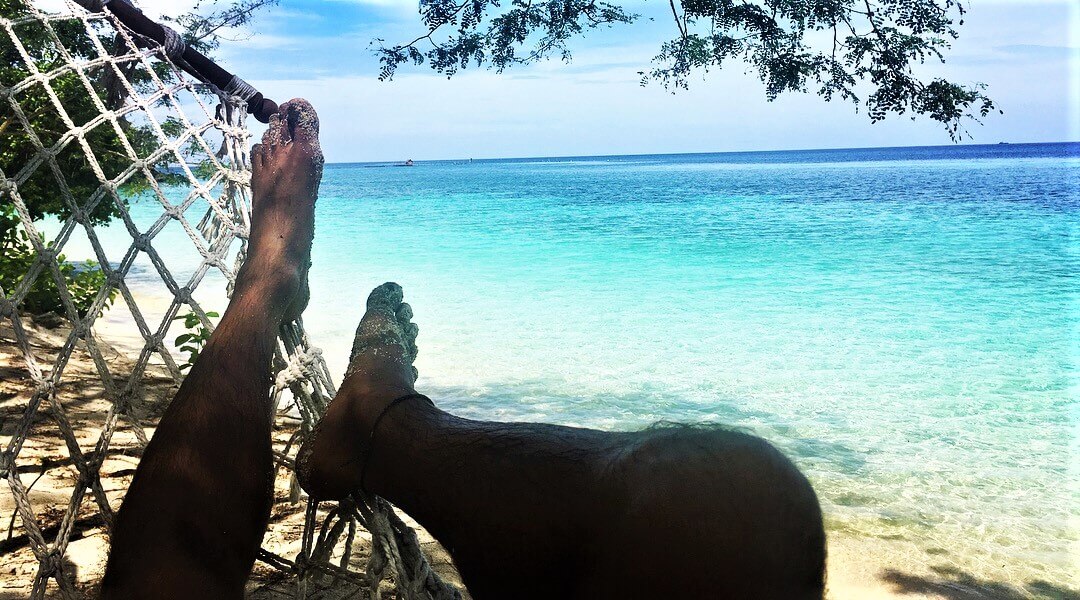
Yet the island of Labengki did it with style. I spent quite a good part of my one week stay there lying in that hammock and reading a book. Even when I raised my eyes for the one hundredth time the beauty of the turquoise bay just hit me in the face. The color of water seemed to be different every few minutes based on the hours of the day, sunlight intensity, the tide and the waves. The clear lines of light turquoise to dark turquoise to dark blue and straight back to light turquoise, hinting at the coral reefs and the drop-offs and the sandy bottoms beneath the surface. I just kept looking at it for 30 minutes straight, then got consumed by the book, and when I raised my eyes – boom. Again, I could not believe where I am.
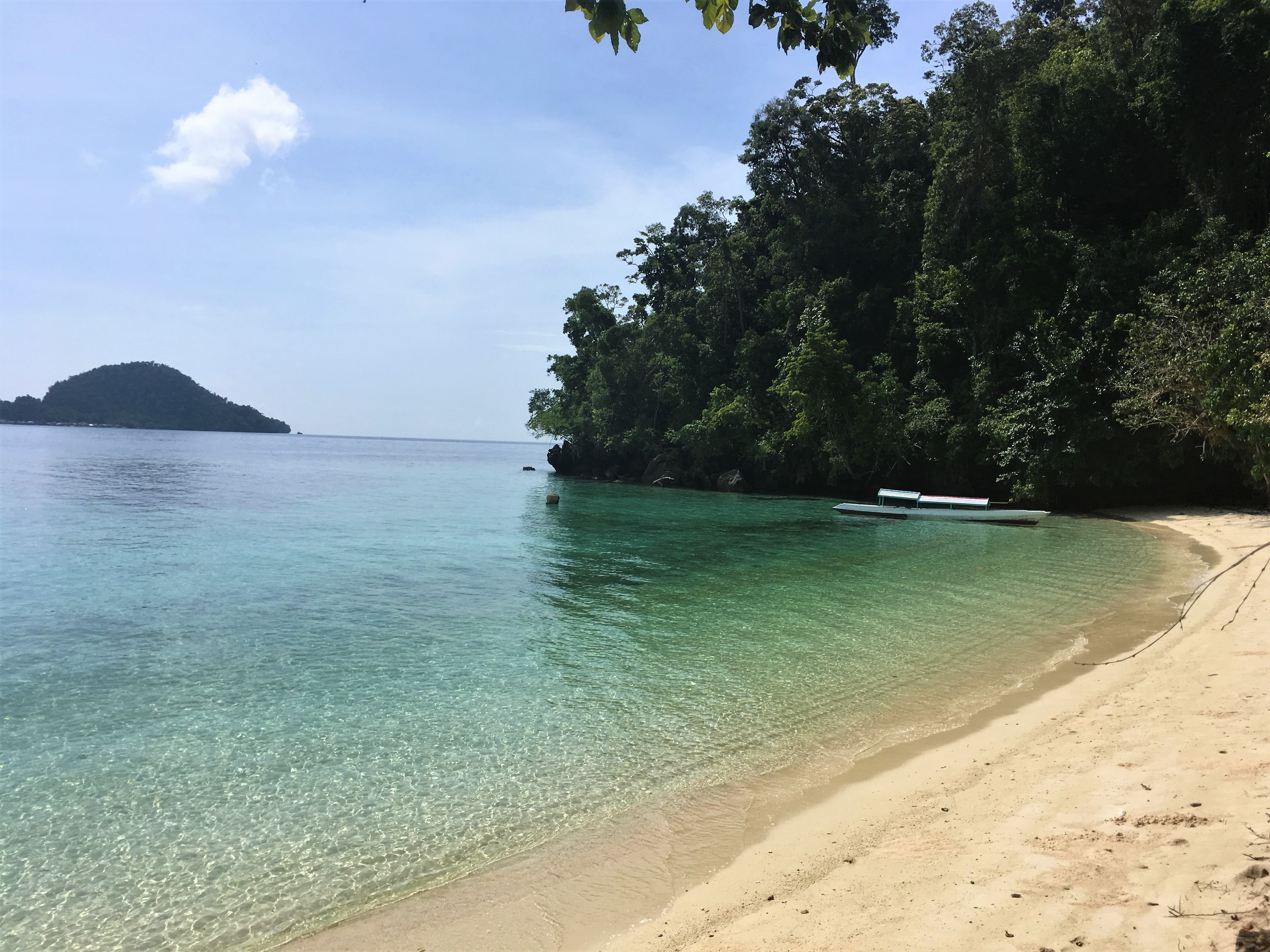
However, this was not what made Labengki so special. I have seen such color before, even though it hits me every time. The island was a perfect storm of things I love about travel, and especially about travel of the ‘deserted island’ type.
First, the island was actually deserted 🙂 Well, not completely, but the vast majority of its interior was literally unexplored. There were a few white sandy beaches around its shores, where it was easy to pull a small boat and local Bajau villagers from other islands visited frequently here, to harvest coconuts or clean freshly caught fish. On one of the beaches, my accommodation consisted of a few simple huts, a common bathroom and the main kitchen/storage building.
On the other side of the island, right next to a heart shaped lagoon, a super luxurious eco resort has been built with houses on stilts right over the water – complete with a via-ferrata on one of the island`s rock walls and a zip line across the lagoon. However, this one is closed for much of the year – either it is open only seasonally, or it is actually closed for mere mortals and opens only when a group of seriously rich people arrives.
Beyond the first 500 meters from the shore, the island remains a mystery.

Except for that first stretch of sand, it is made entirely of long sharp granite rocks, unusually thin and long, jutting out like knives. Exploring the island by trying to climb over those rocks really felt like walking on knives and turned my trainers into pieces of cut fabric. The surface raises rapidly from the coast towards the interior in a series of dramatically exposed granite walls and finally forms a rather tall mountain covered in thick jungle that makes up the majority of the island.
The local host told me nobody ever ventured up the mountain. The villagers fear going there and there was no scientific expedition yet. Sleeping in the beach hut, the feeling of impenetrable unexplored jungle just behind it really created the unique atmosphere on Labengki.
You can check the satellite view of the island on Google Maps below to get a better idea of how ‘uncivilized’ it is. No roads, no farms, no permanently inhabited settlements, just jungle growth and a few white beaches on its coast.
The Journey
Second, what made Labengki even more special was how I got there. My Indonesian trip was nearing its end and I could not decide where to visit next. I have already spent a month on Sulawesi, the octopus-shaped, extremely naturally and culturally diverse 11th biggest island in the world. I have already visited three of its four ‘tentacles’ and I was spending a few days north in Manado with an ear infection.
Based on a tip from a friend of a friend (thanks Roser!), I did my desk research of the island of Sombori in the south-east tentacle. It was supposed to be a Raja Ampat-style paradise, with tens of small jungle covered islands jutting out from a perfectly colored turquoise coral reef. Finding information about staying on the island of Sombori has proven impossible. Nevertheless, I did found a short blog in Bahasa Indonesia about a nearby island called Labengki. I decided to fly to Kendari in South-East Sulawesi and try my luck getting there. I had to spend a week in Kendari which is, let’s say, not the most beautiful city in Indonesia. There was work to do – visa extension, treating an ear infection, and arranging the ‘Labengki expedition’.
Finally, I found the contact on Labengki Beach Hut, which looked like the perfect accommodation for a week stay on the island, even if it was slightly above my budget. Given that the island is uninhabited, you have to ship all goods there, and the competition is almost non-existing, I decided the price is bearable. I tried to contact the eco resort on the island too but all I got was the answer “it is too expensive for you” :D. Communication with Labengki was a little complicated, as there is no mobile signal on the island.
That is another thing I love about travelling to remote places. You cannot imagine how much of a difference it makes for your mind to be a few days completely offline. Especially if you are a solo traveller and got a bit addicted to the ‘black mirror’.
While arranging things in Kendari, I also wanted to see anything interesting in the area. I got a tip to visit the Moramo waterfalls and it made a wonderful half-day trip. Maybe I will expand about it in another blog. Meanwhile, enjoy the picture.
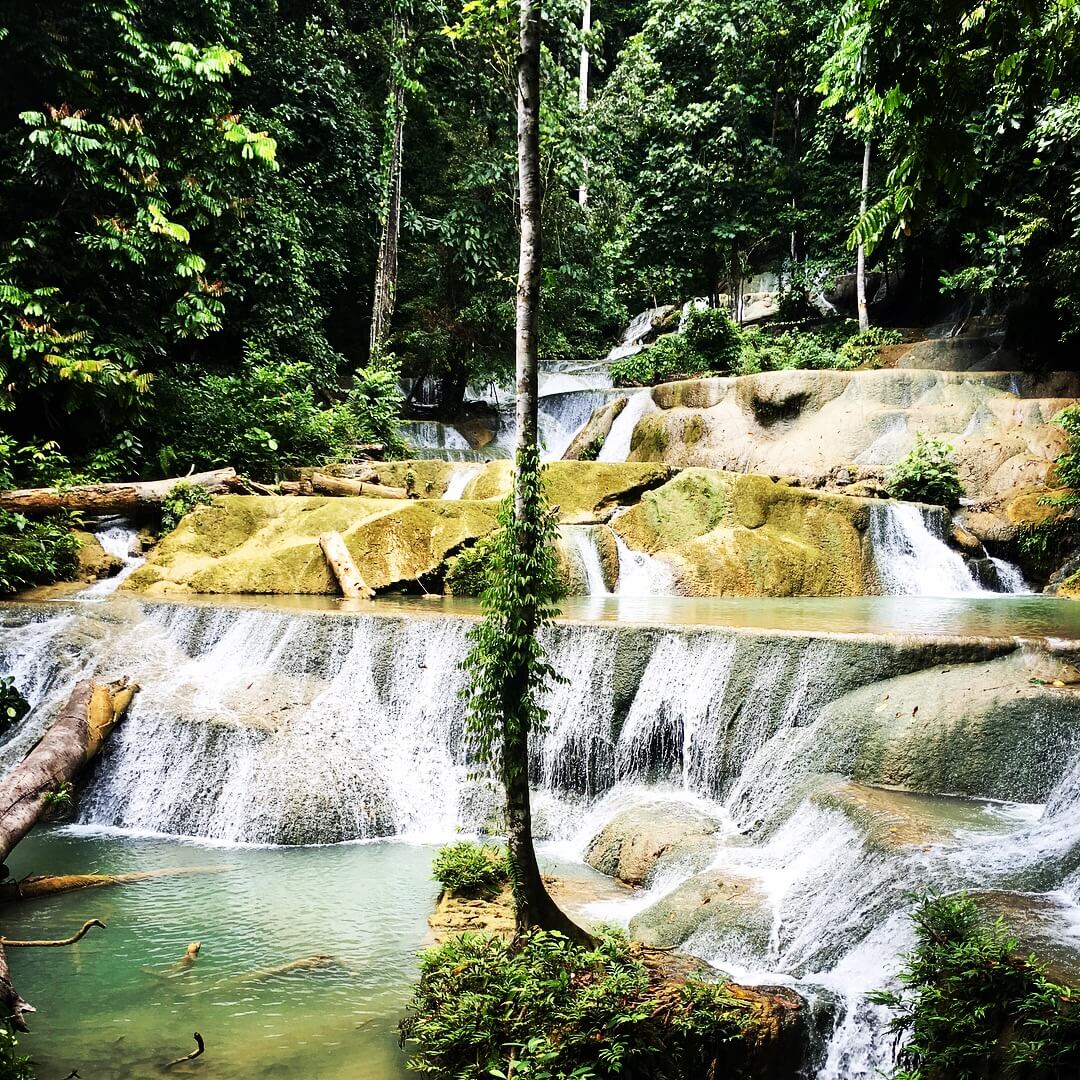
Anyway, arranging my accommodation on Labengki was not that much of an issue. However, actually getting myself there has proven to be quite an adventure – as so many times in Indonesia already. Off course, there is no public transportation and chartering a whole boat there would cost me millions of rupiahs.
Labengki Beach Hut usually accommodates large groups of Indonesians who can split the payment for the charter. This was not an option as it was out of season, and they were not expecting anybody besides me. That actually made me want to get there even more. The only way to get there, it turned out, is to use a fishing boat that comes from the nearby island of Labengki Kecil, inhabited by the fabled Bajau people. Manager from the Beach Hut would try to find a Bajau captain currently in Kendari, who would take me to Labengki for a negotiable fee.
That was not to be the end of the transport adventure though. While in Kendari, I found out there was another foreigner in Hotel Santika Jaya where I was staying. This was quite a coincidence as the city really looked like I am the only bule (foreigner in Indonesian) there. His name was Carlos and he was a very energetic hearty seasoned Catalan backpacker. He was exploring South East Sulawesi the same as me and was keen to get to Sombori/Labengki as well. However, he was not able to get any information about how to get there and where to sleep. I shared my knowledge and since then we were both in the same boat. Literally.
Finally, after a few days we got contact on Ayub. He was our Kendari connection between the Beach Hut and the Bajau fishing boat. We were supposed to meet the Bajau captain Irwan in the port of Tanasa north of Kendari in the afternoon the next day.
In the morning, I went to collect my visa while Ayub and Carlos went to shop for supplies that we had to bring to the Beach Hut ourselves if we wanted to eat. On the island itself, the resources were limited to water, fresh fish, chili and some locally grown papaya, coconuts and herbs. Carlos and Ayub bought rice, bread, flour and chocolate spread for pancakes, bananas and watermelons. On my initiative, we also bought a 12-pack of Prost, the local beer. Well prepared, we got to the port located almost 30 km from Kendari to embark on the Bajau fishing boat for the 3-hour transfer to Labengki.
However, to our surprise, captain Irwan was not present. Two Bajau teenagers in the boat told us the boat would not be leaving, as the weather does not look good today. Carlos and I have been left standing on the pier. Quite frustrated with big bags full of supplies and bedding sheets, unable to contact Irwan. Nevertheless, if we did not want to swim to Labengki, our only option was to get back to the city and try our luck next morning. By this time, we were also considering abandoning the Labengki adventure whatsoever. Both of us have already spent too much time in the uninteresting town of Kendari. The idea of having an entire paradise-like island to explore just for ourselves sounded just too good so we stayed determined.
Therefore, we had no other choice but to get back to Santika Jaya Hotel and wait for the next morning. Joking on our inability to leave the hotel, Carlos compared it to the hotel from Eagles’ hit Hotel California from where “you can never leave”, and began singing ‘Welcome to the Hotel Santika Jaya’, a tune that stuck in my head for some time :).
Next morning came and we had to be at the port at 5 am, before sunrise, if we wanted to make it for Labengki. Fortunately, captain Irwan was now present and all looked good for departure. The Bajau crew loaded the wooden boat full of cargo, including our supplies. Carlos and I each found our place in between the water canisters, gas tanks, cans of coke, slabs of ice, bags of cement and other material, ready to sleep off the early morning wake-up.
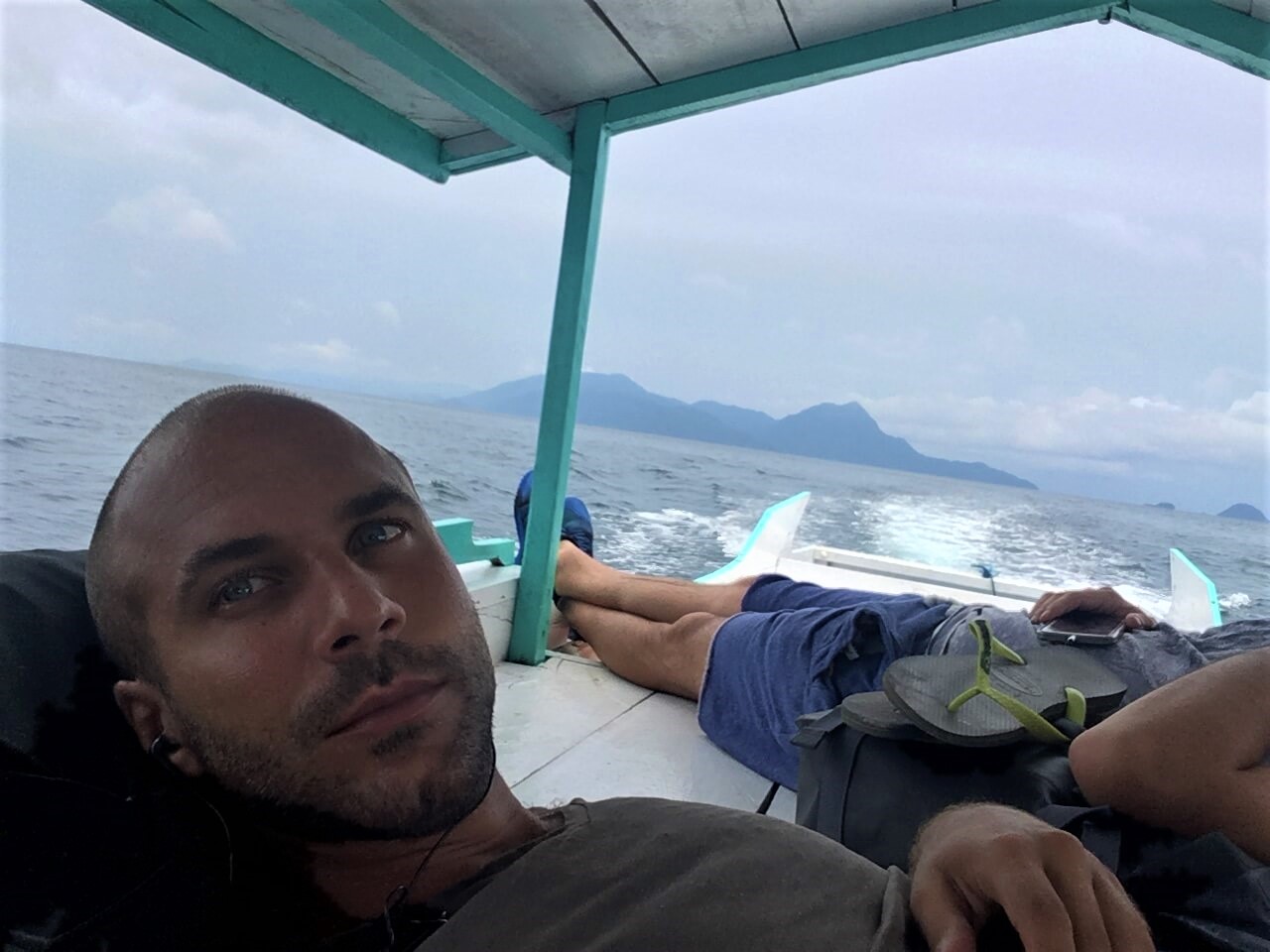
It turned out Labengki did not want to make it easy for us. As soon as the engine started to roar, it was obvious there is a mechanical problem with the boat. When we started to sail out of the bay, the boat kept turning to the right so we were making circles, unable to steer left. The crew at first attempted to make makeshift repairs on the sea, boat gasoline spraying around while they (and we) were smoking cigarettes, and later decided to anchor the boat back in port for a more thorough maintenance. When we set off for a second time and the boat still did not work, Carlos and I started to become a bit desperate. Now we were seriously thinking about whether this is some kind of higher power telling us not to go to Labengki.
However, we just stretched ourselves on the boat, lighting another cigarette, and let the fate decide. If I learned something on my solo travel, it is that if you are not in a hurry, the world will always take care of you somehow.
In addition, the plus side of waking up so early was that we got to experience a beautiful sunrise. Also, the delay got me enough time to download a pdf book to read during the 1 week offline on the island. In the end, the Bajau guys managed to repair the boat using a cut-out from a beer can (not kidding) and we set off on a 3 hour ‘cruise’ towards the mysterious island in the deafening roar of the boat`s tuk tuk engine.
The Bajau village
Maybe it was the difficulty getting there, but the Labengki island fulfilled all of my expectations for a remote ‘lost world’ paradise island. First, we got a look at it from Labengki Kecil, a much smaller neighboring island the size of 2 football fields, which hosted a typical Bajau village. We stopped here first as Irwan and his crew needed to unload all of the supplies bought in Kendari. The Bajau village, being outside of the reach of any public transportation, lived a life of its own and looked like taken straight out of a National Geographic documentary. I swear the color of water on the pictures is not photoshopped 🙂
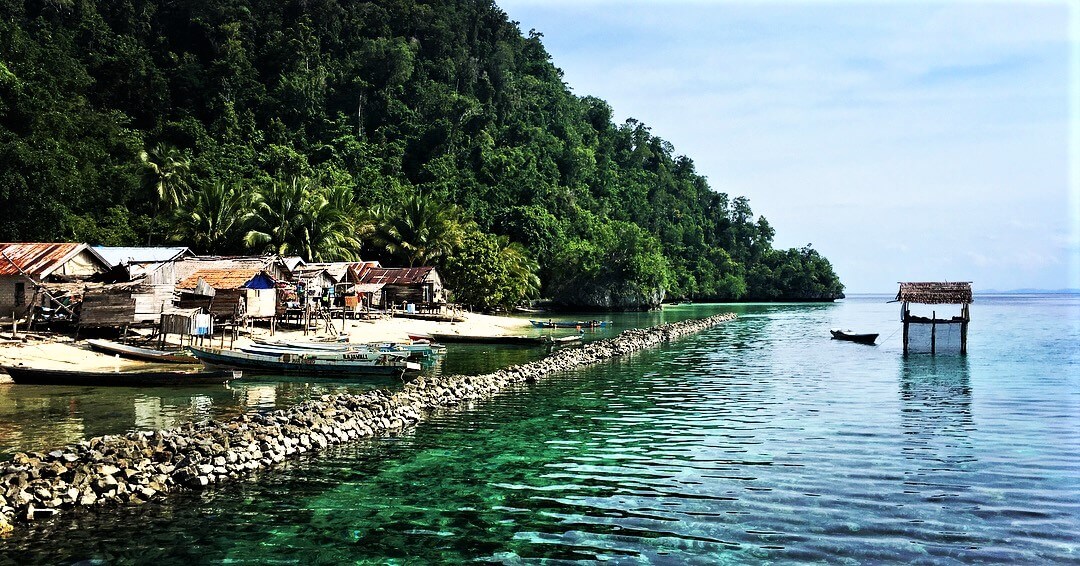
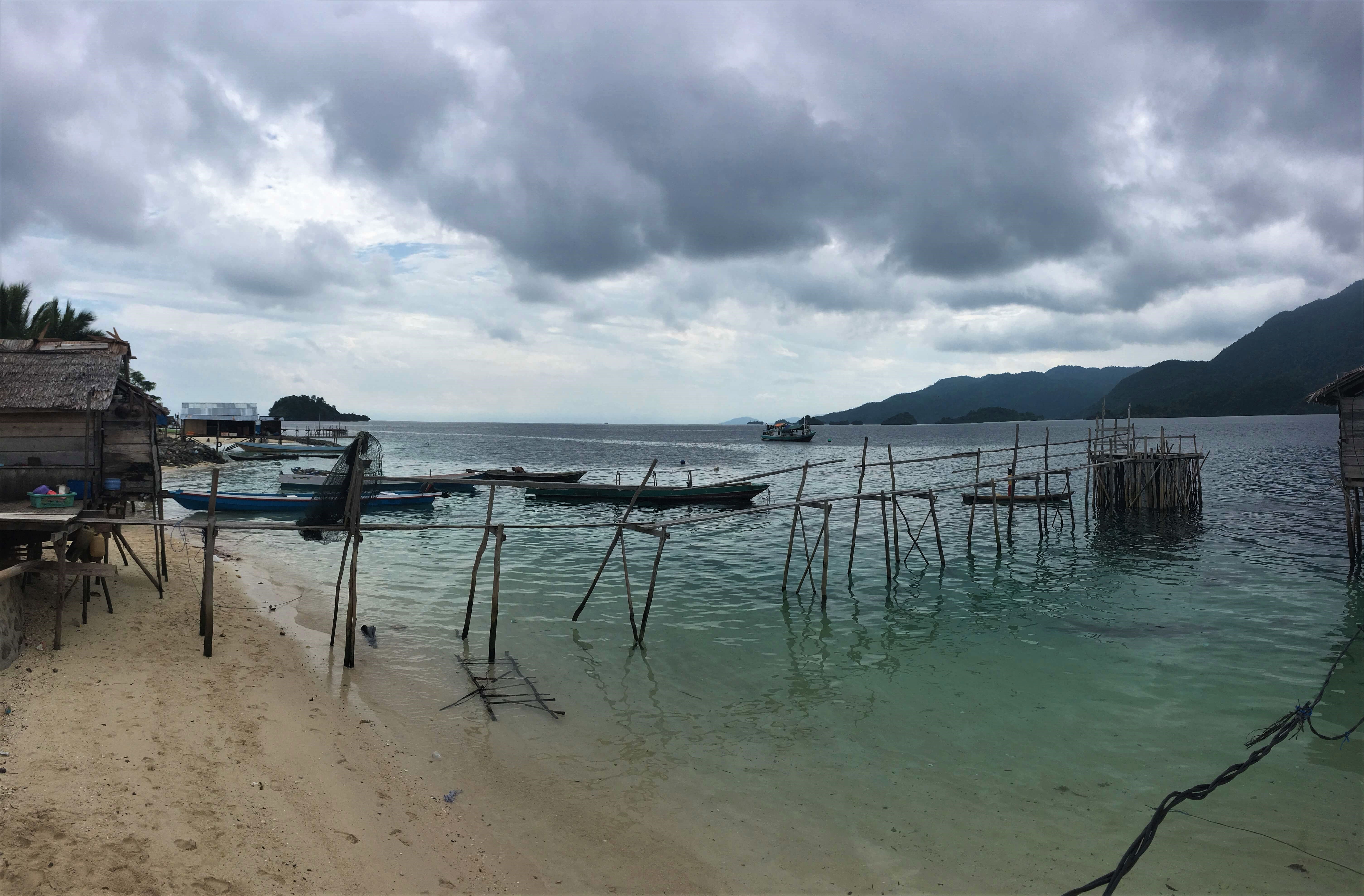

My curiosity was drawn to a large abandoned lighthouse that rose at the other end of Labengki Kecil, which I later had the opportunity to explore. After Irwan got the whole boat unloaded, he finally took us to Labengki Beach Huts on the opposite island. The ‘resort’ consisted of 10 simple beach huts spread around a picture perfect beach. It was surrounded by thick jungle raising into an impressive mountain in the center of the island.
The huts were very simple. Each had just a big bed with a mosquito net and a chair in the front porch. Showers and toilets were shared and located in another building. Obviously, there was no running water. The shower was a typical Indonesian mandi, with a big container of salt water and a scoop to pour the water over yourself. I did not mind that as you need to get used to a little discomfort if you want to explore truly unique places.
As it was off season, the only people around were me, Carlos, the on-site manager Irwan, his friend and a cook. Immediately after throwing my backpack into the hut, I opened a can of beer with Carlos, leaned on a hammock and just enjoyed the color of the water. With no mobile signal, a good book and many things to explore, all the hardships of getting to Labengki already paid off.
Experiencing a cultural documentary of the Bajau people without any pretense and staged performances was one of the most interesting things I have seen on my travels. More about the Bajau life and a trip to an abandoned lighthouse in the second part of the Labengki blog! To find out how to get there, what to take with you and where to stay, check out the Practical information.